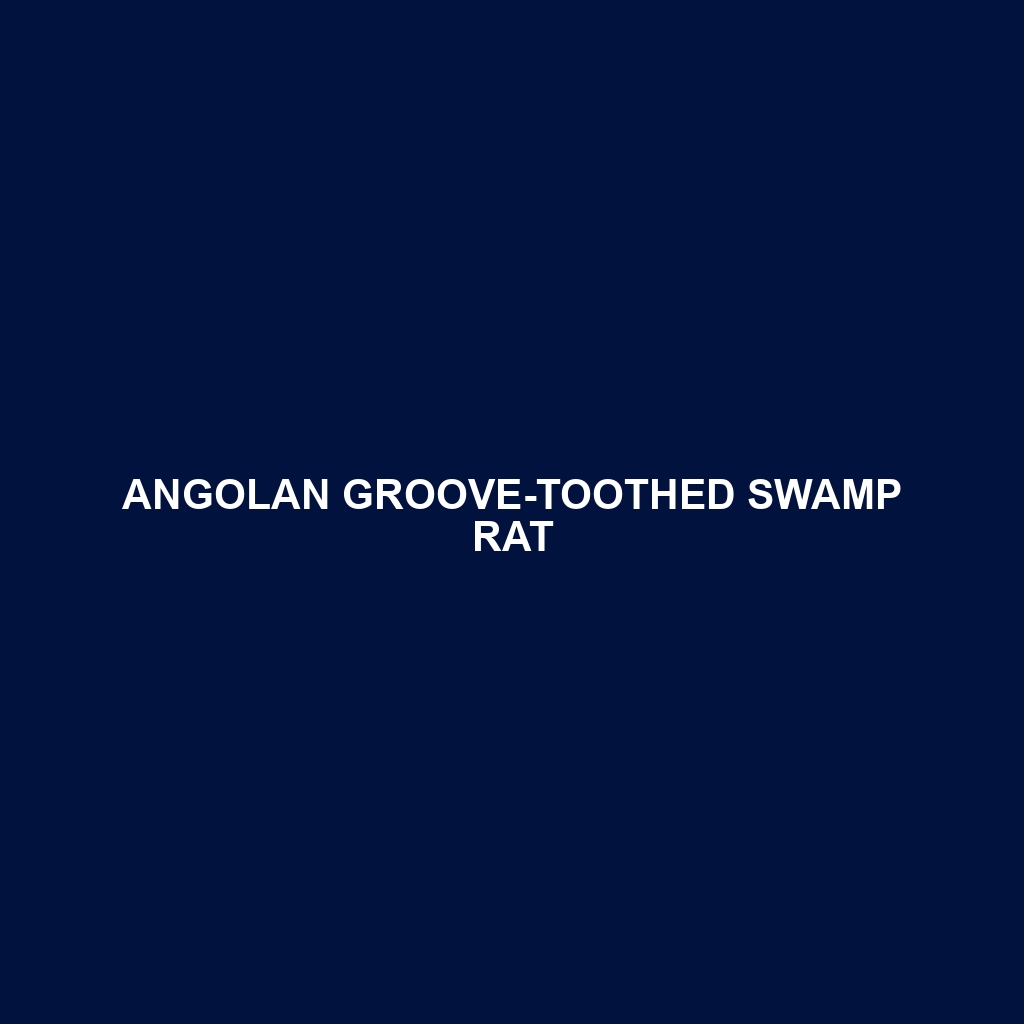Common Name: Angolan Groove-toothed Swamp Rat
Scientific Name:
Habitat:
The Angolan Groove-toothed Swamp Rat is primarily found in the wetlands of Angola and parts of surrounding countries in southern Africa. This rodent thrives in dense marshes, reed beds, and perennial floodplains that provide a moist environment essential for its survival. The specific geographic locations include the Ovambo region, which boasts an abundance of aquatic vegetation, creating a perfect habitat for this unique species.
Physical Characteristics:
The Angolan Groove-toothed Swamp Rat is a medium-sized rodent, typically weighing between 200 to 400 grams. It has a distinctive elongated body that can measure up to 30 cm in length, not including a rather short tail. The fur is generally a mix of brown and gray hues, providing effective camouflage amidst its natural marshy habitat. Notable features include its groove-like incisor teeth, a unique adaptation that distinguishes it from other rodent species, allowing it to effectively gnaw through tough vegetation.
Behavior:
This species exhibits a primarily nocturnal behavior, retreating into dense vegetation during the day and foraging for food at night. Angolan Groove-toothed Swamp Rats are known for their excellent swimming capabilities, often escaping predators by diving into nearby water bodies. Socially, they tend to be solitary, although they may congregate in small groups during breeding seasons. Their vocalizations and scent-marking are critical for communication and territorial behaviors, attracting interest from researchers and enthusiasts alike.
Diet:
The diet of the Angolan Groove-toothed Swamp Rat mainly consists of aquatic plants, seeds, and roots found in their wetland habitats. They are known to feed on a variety of grasses and sedges, making them herbivores with a specific inclination towards nutrient-rich vegetation. Their foraging behavior involves harvesting from both above-ground foliage and below-ground roots, showcasing their adaptability in diet.
Reproduction:
This species breeds year-round, with a peak in activity during the rainy seasons when food is most abundant. Female Angolan Groove-toothed Swamp Rats typically give birth to litters of 3 to 5 offspring, following a gestation period of about 30 days. Notably, they exhibit strong maternal care, ensuring that the young are well-protected until they reach independence, usually around 6 weeks of age.
Conservation Status:
The Angolan Groove-toothed Swamp Rat is currently classified as ‘Vulnerable’ on the IUCN Red List due to habitat loss and degradation caused by agricultural expansion and urban development. Conservation efforts are essential to ensure the preservation of this unique rodent and its natural habitat.
Interesting Facts:
One interesting fact about the Angolan Groove-toothed Swamp Rat is its exceptional ability to navigate through dense marshland, which is largely attributed to its long, curved claws that help it climb and dig through vegetation. Additionally, its groove-toothed incisors are not just effective for feeding, but they are also an evolutionary adaptation that clues researchers into the species’ ecological niche.
Role in Ecosystem:
As a herbivore, the Angolan Groove-toothed Swamp Rat plays a vital role in its ecosystem by contributing to plant population dynamics through its eating habits. By feeding on aquatic plants, they help manage plant overgrowth, which fosters a balanced wetland environment. Furthermore, they serve as prey for various predatory species, thus playing an integral role in maintaining the food web within their habitat.
